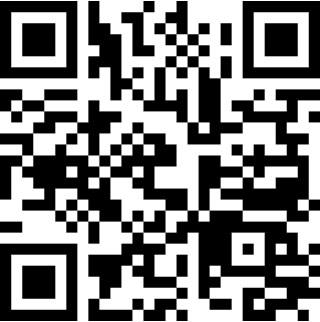Targeting strategy
- The exons 1-4 of mouse Il4 gene that encode the full length coding sequence were replaced by human IL4 exons 1-4 in B-hIL4/hIL4RA mice. The exons 4-7 of mouse Il4ra gene that encode the extracellular region coding sequences were replaced by human IL4RA exons 4-7 in B-hIL4/hIL4RA/hIL5/hIL5RA mice.
- The exons 1-4 of mouse Il5 gene that encode the whole molecule (ATG to STOP codon), including 3’UTR were replaced by human B-hIL4/hIL4RA/hIL5/hIL5RA. The promoter and 5’UTR region of the mouse gene are retained. The human IL5 expression is driven by endogenous mouse Il5 promoter, while mouse Il5 gene transcription and translation will be disrupted.
- The human IL5RA coding sequence was inserted to replace part of murine exon 5 B-hIL4/hIL4RA/hIL5/hIL5RA. Theinsertion disrupts the endogenous murine Il5ra gene, resulting in a non-functional transcript.
-
The B-hIL4/hIL4RA/hIL5/hIL5RA mice were obtained by breeding B-hIL4/hIL5/hIL4RA mice with B-hIL5RA mice.
Protein expression analysis-IL4

Strain specific IL4 expression analysis in wild-type mice C57BL/6JNifdc mice and homozygous B-hIL4/hIL4RA/hIL5/hIL5RA mice by ELISA. Serum was collected from wild-type C57BL/6JNifdc mice (+/+) (male, n=3, 8-week-old) and homozygous B-hIL4/hIL4RA/hIL5/hIL5RA (H/H;H/H;H/H;H/H) (male, n=3, 8-week-old) stimulated with 7.5 μg/200 μL anti-mouse CD3ε (BioXcell, BE0001-1) in vivo for 4 hrs. Expression level of mouse and human IL4 were analyzed by ELISA (mouse IL4 ELISA kit: BioLegend, 431104; human IL4 ELISA kit: BioLegend, 430304). Mouse IL4 was exclusively detectable in wild-type C57BL/6JNifdc mice, but not in homozygous B-hIL4/hIL4RA/hIL5/hIL5RA mice. Human IL4 was exclusively detectable in homozygous B-hIL4/hIL4RA/hIL5/hIL5RA mice, but not in wild-type C57BL/6JNifdc mice. Values are expressed as mean ± SEM.
Protein expression analysis IL5

Strain specific IL5 expression analysis in wild-type mice C57BL/6JNifdc mice and homozygous B-hIL4/hIL4RA/hIL5/hIL5RA mice by ELISA. Spleen were collected from wild-type mice C57BL/6JNifdc (+/+) and homozygous B-hIL4/hIL4RA/hIL5/hIL5RA (H/H;H/H;H/H;H/H) (male, n=3, 8-week-old). Spleen were respectively stimulated with 2 μg/mL anti-mouse CD3 (BioXcell, BE0001) and 5 μg/mL anti-mouse CD28 (BioXcell, BE0015) in vitro. Expression level of mouse and human IL5 were analyzed by ELISA (mouse IL5 ELISA kit: R&D, M5000; human IL5 ELISA kit: R&D, D5000B). Mouse IL5 was exclusively detectable in wild-type C57BL/6JNifdc mice, but not in homozygous B-hIL4/hIL4RA/hIL5/hIL5RA mice. Human IL5 was exclusively detectable in homozygous B-hIL4/hIL4RA/hIL5/hIL5RA mice, but not in wild-type C57BL/6JNifdc mice. Values are expressed as mean ± SEM.
Protein expression analysis mIL4RA

Strain specific IL4RA expression analysis in wild-type C57BL/6JNifdc mice and homozygous humanized B-hIL4/hIL4RA/hIL5/hIL5RA mice by flow cytometry. Spleen were respectively stimulated with 2 μg/mL anti-mouse CD3 (BioXcell, BE0001) and 5 μg/mL anti-mouse CD28 (BioXcell, BE0015) in vitro. Protein expression was analyzed with anti-mouse IL4RA antibody (Biolegend, 144804) by flow cytometry. Mouse IL4RA was exclusively detectable in wild-type C57BL/6JNifdc mice, but not in homozygous B-hIL4/hIL4RA/hIL5/hIL5RA mice.
Protein expression analysis hIL4RA

Strain specific IL4RA expression analysis in wild-type C57BL/6JNifdc mice and homozygous humanized B-hIL4/hIL4RA/hIL5/hIL5RA mice by flow cytometry. Spleen were respectively stimulated with 2 μg/mL anti-mouse CD3 (BioXcell, BE0001) and 5 μg/mL anti-mouse CD28 (BioXcell, BE0015) in vitro. Protein expression was analyzed with anti-human IL4RA antibody (Biolegend, 355006) by flow cytometry. Human IL4RA was exclusively detectable in homozygous B-hIL4/hIL4RA/hIL5/hIL5RA mice, but not in wild-type C57BL/6JNifdc mice.
Protein expression analysis hIL5RA

Strain specific IL5RA expression analysis in wild-type C57BL/6JNifdc mice and homozygous humanized B-hIL4/hIL4RA/hIL5/hIL5RA mice by flow cytometry. BM were isolated from wild-type C57BL/6JNifdc (+/+) and homozygous B-hIL4/hIL4RA/hIL5/hIL5RA(H/H;H/H;H/H;H/H) (female, 8-week-old). Protein expression was analyzed with anti-human IL5RA antibody (BD, 555902) by flow cytometry. Human IL5RA was exclusively detectable in homozygous B-hIL4/hIL4RA/hIL5/hIL5RA mice, but not in wild-type C57BL/6JNifdc mice.
Frequency of leukocyte subpopulations in spleen

Frequency of leukocyte subpopulations in spleen by flow cytometry. Splenocytes were isolated from wild-type C57BL/6JNifdc (+/+) and homozygous
B-hIL4/hIL4RA/hIL5/hIL5RA(H/H;H/H;H/H;H/H) (female, n=3, 8-week-old). A. Flow cytometry analysis of the splenocytes was performed to assess the frequency of leukocyte subpopulations. B. Frequency of T cell subpopulations. Percentages of T cells, B cells, NK cells, dendritic cells, monocytes, macrophages, neutrophils, CD4+ T cells, CD8+ T cells and Tregs in B-hIL4/hIL4RA/hIL5/hIL5RA mice were similar to those in C57BL/6JNifdc mice. Values are expressed as mean ± SEM.

Frequency of leukocyte subpopulations in spleen by flow cytometry. Splenocytes were isolated from wild-type C57BL/6JNifdc (+/+) and homozygous B-hIL4/hIL4RA/hIL5/hIL5RA(H/H;H/H;H/H;H/H) (female, n=3, 8-week-old). Flow cytometry analysis of the splenocytes was performed to assess the frequency of leukocyte subpopulations. Percentages of basophils and eosinophils in B-hIL4/hIL4RA/hIL5/hIL5RA mice were similar to those in C57BL/6JNifdc mice. Values are expressed as mean ± SEM.
Frequency of leukocyte subpopulations in blood

Frequency of leukocyte subpopulations in blood by flow cytometry. Blood were isolated from wild-type C57BL/6JNifdc (+/+) and homozygous B-hIL4/hIL4RA/hIL5/hIL5RA(H/H;H/H;H/H;H/H) (female, n=3, 8-week-old). A. Flow cytometry analysis of the blood was performed to assess the frequency of leukocyte subpopulations. B. Frequency of T cell subpopulations. Percentages of T cells, B cells, NK cells, dendritic cells, monocytes, macrophages, neutrophils, CD4+ T cells, CD8+ T cells and Tregs in B-hIL4/hIL4RA/hIL5/hIL5RA mice were similar to those in C57BL/6JNifdc mice. Values are expressed as mean ± SEM.

Frequency of leukocyte subpopulations in blood by flow cytometry. Blood were isolated from wild-type C57BL/6JNifdc (+/+) and homozygous B-hIL4/hIL4RA/hIL5/hIL5RA(H/H;H/H;H/H;H/H) (female, n=3, 8-week-old). Flow cytometry analysis of the blood was performed to assess the frequency of leukocyte subpopulations. Percentages of basophils and eosinophils in B-hIL4/hIL4RA/hIL5/hIL5RA mice were similar to those in C57BL/6JNifdc mice. Values are expressed as mean ± SEM.
Frequency of leukocyte subpopulations in BM

Frequency of leukocyte subpopulations in BM by flow cytometry. BM were isolated from wild-type C57BL/6JNifdc (+/+) and homozygous B-hIL4/hIL4RA/hIL5/hIL5RA(H/H;H/H;H/H;H/H) (female, n=3, 8-week-old). A. Flow cytometry analysis of the BM was performed to assess the frequency of leukocyte subpopulations. B. Frequency of T cell subpopulations. Percentages of T cells, B cells, NK cells, dendritic cells, monocytes, macrophages, neutrophils, CD4+ T cells, CD8+ T cells and Tregs in B-hIL4/hIL4RA/hIL5/hIL5RA mice were similar to those in C57BL/6JNifdc mice. Values are expressed as mean ± SEM. Significance was determined by two-way ANOVA test. *P < 0.05, **P < 0.01, ***p < 0.001.

Frequency of leukocyte subpopulations in BM by flow cytometry. BM were isolated from wild-type C57BL/6JNifdc (+/+) and homozygous B-hIL4/hIL4RA/hIL5/hIL5RA(H/H;H/H;H/H;H/H) (female, n=3, 8-week-old). Flow cytometry analysis of the BM was performed to assess the frequency of leukocyte subpopulations. Percentages of basophils and eosinophils in B-hIL4/hIL4RA/hIL5/hIL5RA mice were similar to those in C57BL/6JNifdc mice. Values are expressed as mean ± SEM.
Frequency of leukocyte subpopulations in lymph node

Frequency of leukocyte subpopulations in lymph node by flow cytometry. Lymph node were isolated from wild-type C57BL/6JNifdc (+/+) and homozygous B-hIL4/hIL4RA/hIL5/hIL5RA(H/H;H/H;H/H;H/H) (female, n=3, 8-week-old). A. Flow cytometry analysis of the lymph node was performed to assess the frequency of leukocyte subpopulations. B. Frequency of T cell subpopulations. Percentages of T cells, B cells, NK cells, CD4+ T cells, CD8+ T cells and Tregs in B-hIL4/hIL4RA/hIL5/hIL5RA mice were similar to those in C57BL/6JNifdc mice. Values are expressed as mean ± SEM.
In vivo efficacy of Anti-human IL4RA antibody combined with anti-human IL5 antibody in asthma mouse model

Analysis of immune cells in BALF by flow cytometry. B-hIL4/hIL4RA/hIL5/hIL5RA mice (female, 8-week-old) were stimulated with inducer asthma mouse model. Anti-human IL4RA antibody combined with anti-human IL5 antibody were subcutaneous injection. Broncheoalveolar fluid (BALF) was collected at the end of the experiment to detect inflammatory cell infiltration in lung tissue. The results showed that the number and frequency of eosinophils induced in the treated modeling groups (G2-G3) were significantly higher than that in the un-modeling group (G1), while the number and frequencies of these cells in the treated group (G4) decreased significantly when compared with the treated modeling groups (G2-G3). Values are expressed as mean ± SEM. Significance was determined by one-way ANOVA test. *P < 0.05, **P < 0.01, ***P < 0.001.
Note:The antibody is provided by RegeneCore Biotech Co., Ltd

Total IgE in serum were significantly reduced in the mouse asthma model treated with Anti-human IL4RA antibody combined with anti-human IL5 antibody. Serum was collected at the study endpoint. IgE levels were analyzed by ELISA. The result showed that the levels of total IgE treated group (G4) was significantly lower than treated modeling groups (G2-G3). Values are expressed as mean ± SEM. Significance was determined by one-way ANOVA test. *P < 0.05, **P < 0.01, ***P < 0.001.

H&E staining of asthma model in B-hIL4/hIL4RA/hIL5/hIL5RA mice. Lung tissues were collected at the study endpoint and analyzed with H&E staining. The results showed that compared to the un-modeling group (G1), the modeling groups (G2-G3) showed significant reduction in inflammatory infiltration and mucus secretion in lung tissue. The treated group (G4) showed a downward trend in mucus secretion and eosinophils in lung tissue. Black arrow: inflammatory cells; Red arrow: mucus. Values are expressed as mean ± SEM. Significance was determined by one-way ANOVA test. *P < 0.05, **P < 0.01, ***P < 0.001.









